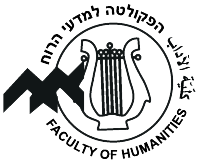Israel Academy of Science (ISF) Grant No. 136/04 (2004-2008)
Science and Instruments:
Theory and practice of early telescopic observations
Giora Hon and Yaakov Zik Department of Philosophy
University of Haifa
Abstract
Our main concern in the research project proposed here is with the nature of scientific change. A common philosophical stance maintains that, as great as was the influence of instrumental ingenuity at the very beginning of the seventeenth century upon the course of modern science, such ingenuity was not at all responsible for the way science has since then developed. However, theories of physical science need an interface between symbolic representations and the real world. Observations, experiments, and the technological means that facilitate them, provide this interface. No matter how intuitively appealing and mathematically advanced the physical theories may be, they only enter the domain of standard physical science when confronted, tested, checked, and modified by the measure of the real world which observation and experiment provide.
The introduction in 1610 by Galileo Galilei (1564–1642) of the telescope as a scientific instrument in astronomy proved of signal importance for the course of modern science. A main question that so far has remained unsettled is whether practice thereby preceded theory. Our first objective, therefore, is to document in detail and analyze the complex relations that subsist between theory and instrument. By critically tracing the origin of the theory of the telescope as it emerged in the transition from the study of reflection to that of refraction (from the study of mirrors to the study of lenses), we are confident that our proposed project will open up novel perspectives on the history of optics.
Our second objective, however, is the wider and more important one. The introduction of the telescope presents a fundamental question in the historiography of the development of modern science: how are we to understand an instrument—that is, a scientific instrument—as an object that encapsulates knowledge in contradistinction to a manuscript that exhibits knowledge in the standard way, i.e., knowledge cast in propositions. It is this fundamental question that our proposal intends to answer.
We expect our research to arrive at significant new insights into the interfaces among instrument, symbolic representation, and the real world. Similarly, the novel methodology our project is designed to develop will form a substantial contribution to the study of the nature of scientific change.
Israel Academy of Science (ISF) Grant No. 67/09 (2009-2012)
Johannes Kepler’s “reformation of all of astronomy” (1609):
The Role of Optics and Observations
Giora Hon and Yaakov Zik Department of Philosophy
University of Haifa
Abstract
The year 2009 marks the 400th anniversary of the publication of one of the most revolutionary scientific texts ever written, Johannes Kepler’s Astronomia nova (1609). In it Kepler (1571–1630) developed an astronomical theory that departs fundamentally from the systems of Ptolemy and Copernicus, hence its distinctly appropriate title. One of the great innovations of this theory is its explicit dependence on the science of optics. The declared goal of Kepler in his earlier publication, Paralipomena to Witelo whereby The Optical Part of Astronomy is Treated (1604), was to solve difficulties and expose deceptive visual illusions which astronomers face when conducting astronomical observations with optical instruments.
Recent studies have been mainly concerned with three of Kepler’s major works—Mysterium cosmographicum (1596), Astronomia nova, and Harmonices mundi (1619)—and considered conceptual, theological, metaphysical, epistemological, methodological, and rhetorical aspects of Kepler’s astronomical works. Against this rich background, we contend that (1) understanding Kepler’s astronomical achievements takes more than seeking comprehension of his archetypal principles and concerns for Aristotelian philosophy, Neo-Platonism, mathematics, mechanics, and insights regarding a new synthesis of natural philosophy and mathematics; and that (2) Kepler’s observational astronomy constitutes a complex practice that calls for a thorough analysis.
A comprehensive grasp of Kepler’s astonishing achievements requires extending the traditional approach to his writings and to study Kepler not only as a mathematico-physical astronomer, but also as a designer of instruments and a practicing observer. We seek new perspectives on the interdependence of optics and astronomy by tracing the origin of the theory of optical instruments in Kepler’s astronomical works. We expect our research to arrive at significant new insights into the interfaces among instrument, symbolic representation, and the perception of the outside world. We will follow a novel methodology which, we hope, will result in a substantial contribution to the understanding of scientific change.

